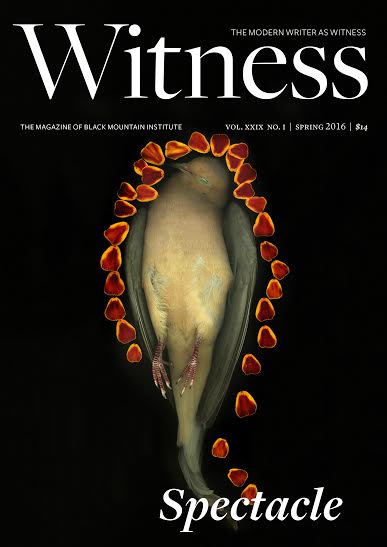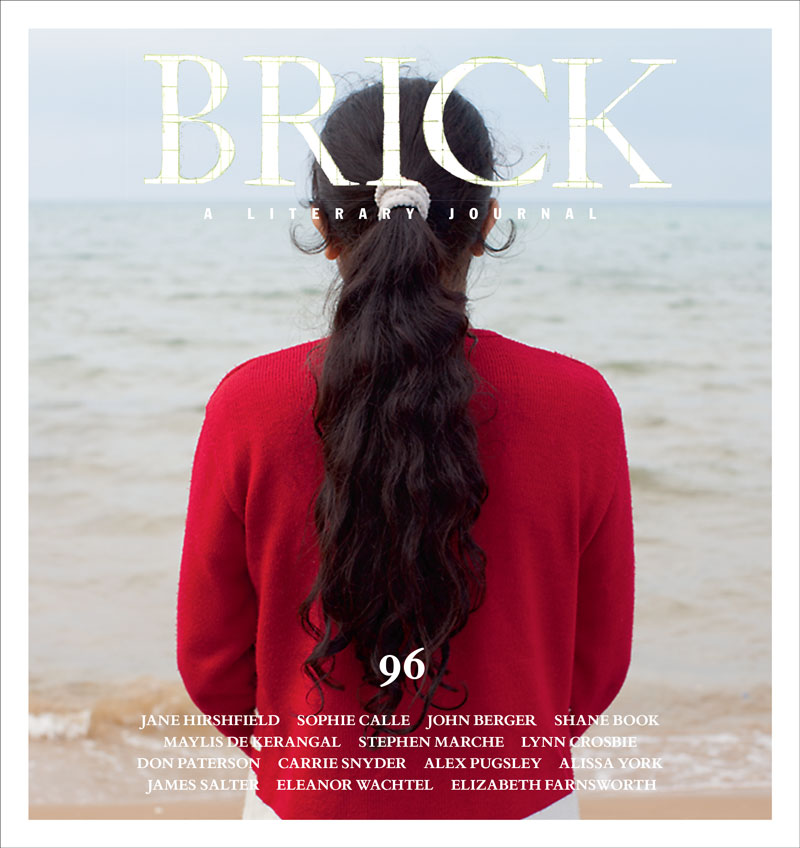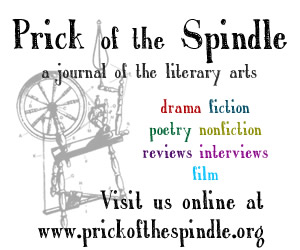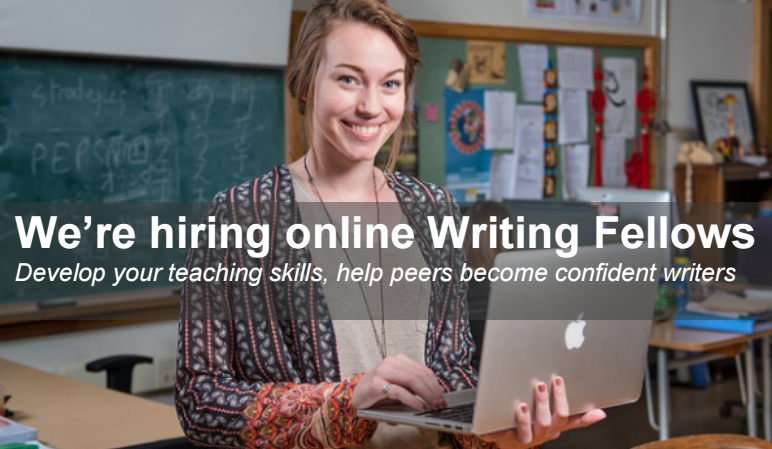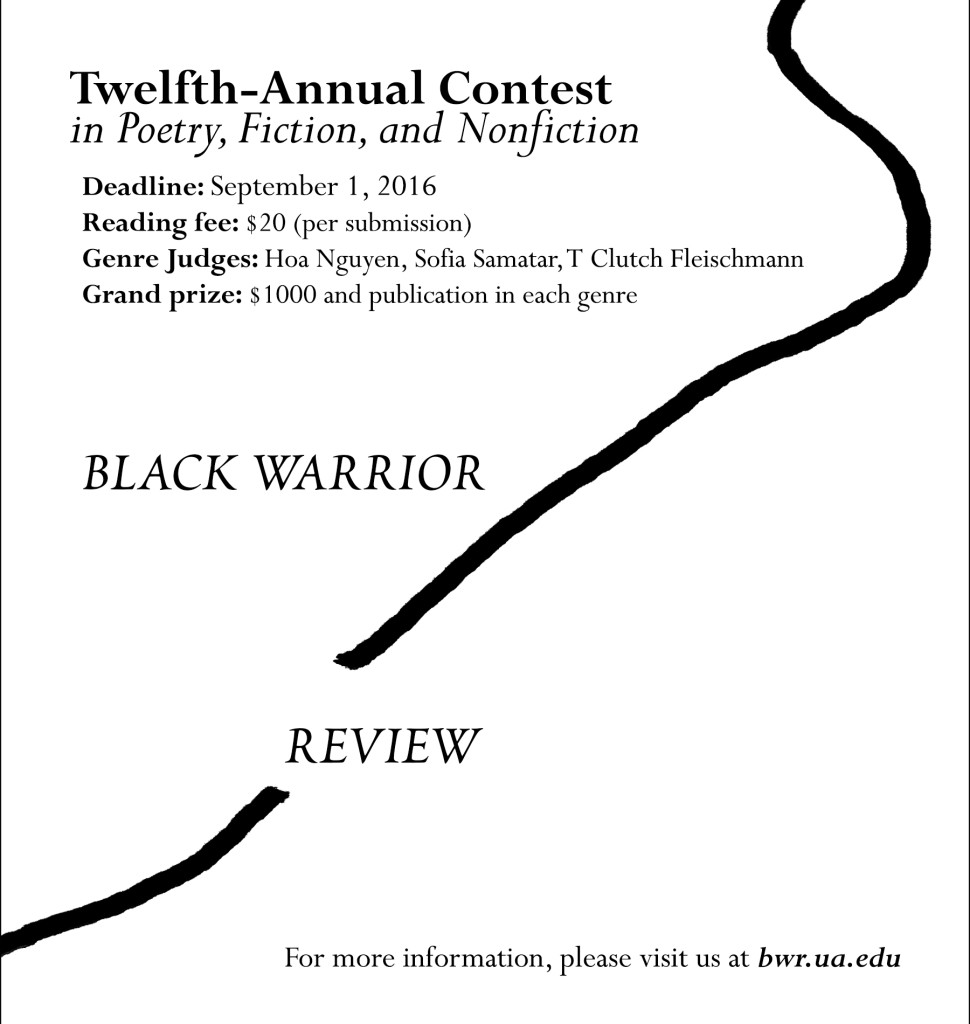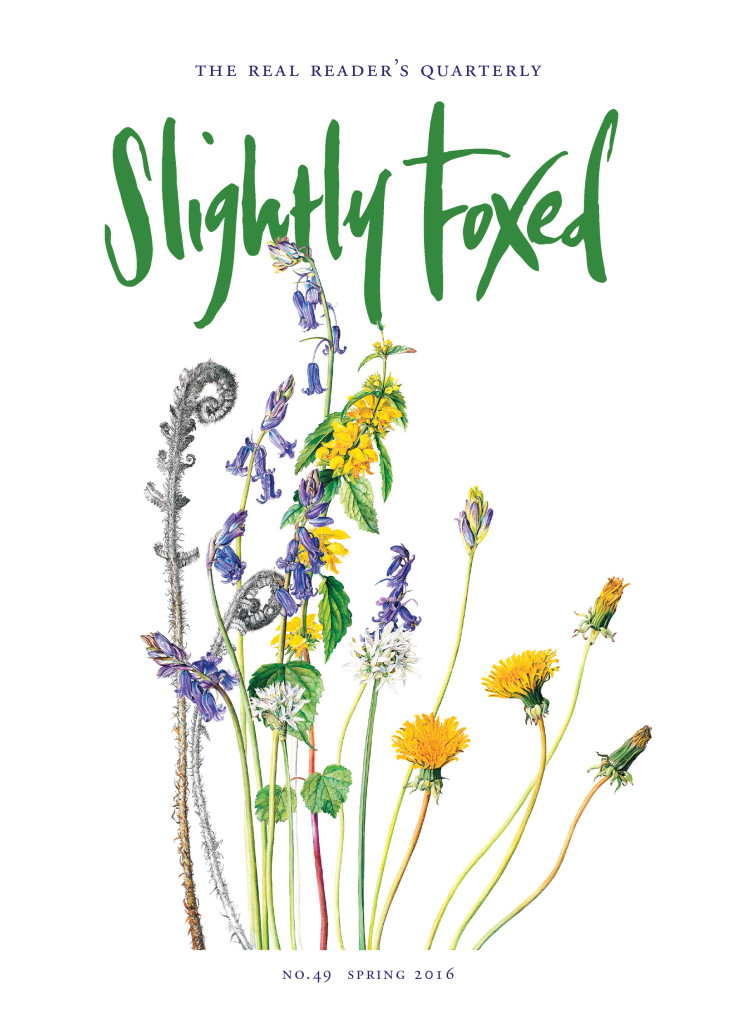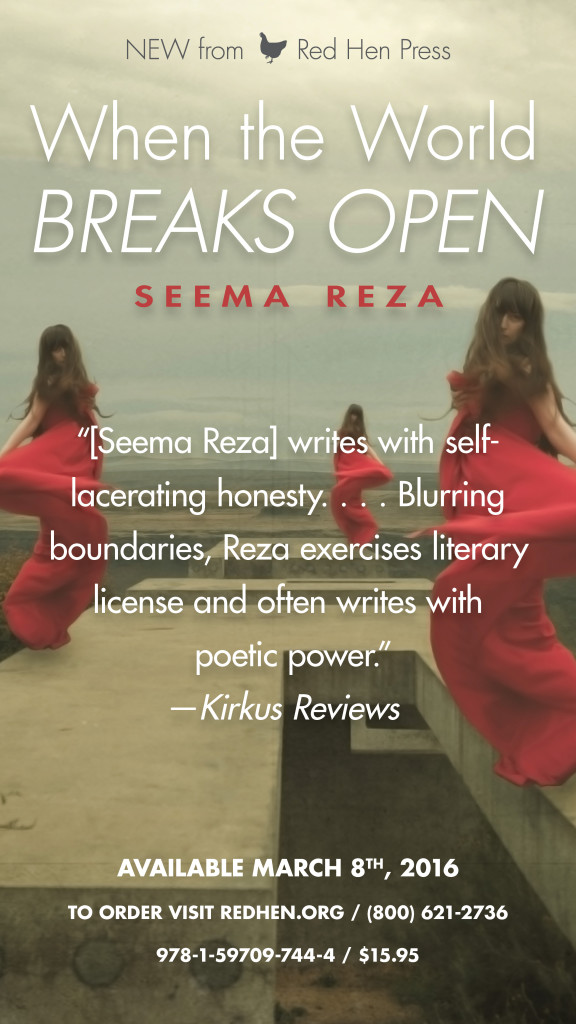Brick has been called many things: an “anthology of enthusiasms” (Michael Ondaatje), “the best literary publication in North America” (Annie Proulx), and “more fun than any other literary magazine around” (Robert Hass). Brick is where the world’s best-loved writers have wide, lively, personal discussions about art, culture, and the written word. You’ll read essays, interviews, translations, and belles lettres on everything from film to food to fiction by the likes of Louise Erdrich, Seamus Heaney, Mavis Gallant, Dionne Brand, Robert Hass, Karen Solie, Kamila Shamsie, Colm Tóibín, and many others. Brick is edited by Michael Redhill, Michael Helm, Linda Spalding, Rebecca Silver Slayter, Laurie D Graham, and Martha Sharpe.
Literary Partners
Features and news about other literary organizations, artists, authors, and poets.
Interview with Marlena Robbins: On Process, Painting and Spirituality
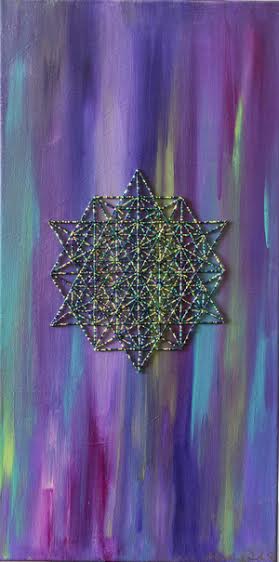
Arizona-raised artist Marlena Robbins is known for her tactile, self-reflexive painting style and use of color and symbolism. Our Art Editor, Regan Henley was lucky enough to ask her a few questions on her work, style and process.
Regan Henley: You’ve said you haven’t been painting for very long, but you seem to spend a lot of time dedicated to it. Is painting your primary medium? Why or why not?
Marlena Robbins: Yes, painting is my primary medium. I use it more so as a therapeutic expressive outlet. I think the brush strokes and colors help me feel my reality. The simple act of the brush strokes help settle my mind, focus and zone into my present. The colors are psychological; reds are passionate; blues and greens are calming; white is pure, black is powerful; etc. I started painting about 3 years ago; it evolved from there and became my own form of therapy. It became a way for me make sense of my reality, my experiences and what I was going through in order to bring me back to the present.
RH: You’ve collected a very interesting group of pieces. What would you say is the overarching theme in this body of work?
MR: I don’t know that there is a theme to it all; I think each piece that I do reflects what I am experiencing at that particular time in my life. If I’m learning something new. For example, a lot of my earlier pieces were political because I was taking an American Indian Studies course; so whatever I was taking in through my course was being reflected through my paintings. Other paintings were an extension of my feelings, thoughts and circumstances of the moment. What I am trying to understand about my reality. My paintings are growing right along with me; they are a reflection of me and the times that I am in right now.
RH: What is your process for creating these works? Do you begin with concepts or images?
MR: I have the concept first; for example when I say that I am painting what I am experiencing and what I am trying to understand about my life, that’s the concept. That’s me thinking about what I am going through right now in order to create. For instance, we recently had a lot of loss in our family and to try to make sense of that all the only way I could was to paint about it and try to bring closure in order to move forward.
Another important concept to me is balance: balancing myself spiritually, mentally, emotionally, physically and how I represent that in my art. Making sense of balance is a lifelong journey; to sustain, nurture and accept that it is a part of who we are as individuals, as human beings. It is very much a part of our purpose.
The concepts definitely do come first, but I take images from my surroundings, the environment and my creative environment. I am very blessed to know and work with amazing artists and have great mentors who put it all out there to be respected and to inspire the people to create.
Some paintings I do start out with a plan, I sketch it first. However, lately, I’ve been mostly experimenting with the mixtures of colors; being intuitive with it and going with the flow. Not really having a plan but giving the canvas my all and the paints their own direction and free will. It’s intimidating to not know what is going to happen or how it’s going to come out because I have this canvas in front of me and I don’t want to mess it up, but at the same time there’s beauty in the unknown. I believe that is parallel with life.
RH: You’ve mentioned that many people are drawn to the three-dimensional quality of your work. Do you ever work with collage or 3D materials when creating these paintings? Your paintings have a kind of texture and warmth that makes them read like textile and fiber arts. How are you influenced by textile arts when creating these pieces?
MR: My very first collage piece was done to pay homage to the women, grandmothers and mothers who came before us. It was pictures of Indigenous women and their children from the late 1800s to mid-1900s. It shows the love that we have for our children as mothers and how that is gifted from generation to generation; the connection we must maintain and nourish with our children. There is no perfect parent; we do our best with what we have.
When I was finished with it I felt as though something was missing. I saw the beads next to me and started beading the outfits in the pictures. My very first collage was my very first beaded painting. The beads add to it, they are unique, different, offer a new texture/effect and are beautiful because it’s like painting with beads. There are very few artists that I’ve seen who bead their paintings. I haven’t seen much on it or read much about it; I know that it is out there, it’s just very unique. I first started beading about 7 years ago; my auntie taught me a very simple stitch. I stopped beading for a long time and it came to back to me when it was supposed to.
RH: Many of these paintings reference spirituality in an abstract way, from the use of patterns, stained glass and geometry; they definitely evoke these thoughts to me, personally. Can you speak a little bit more to that (Are you directly interested in these ideas or are they themes that come up naturally? Are you a very spiritual person? Etc.)?
MR: Spirituality, to me, is an intricate and delicate thought process but very simple to appreciate. It’s not overruled by any written agenda or book. It’s not confined entirely to a religion. It’s how we cope with our reality, how we understand and see ourselves, see the people around us and the world we are in.
I grew up in Window Rock, AZ on the Navajo reservation. Our family didn’t lean towards any religion. There were a lot of traditional Navajo families and Catholic/Mormon families around us. Our mother chose not to excessively influence any one form of religion, she let us understand it for ourselves, and I really appreciated that because it was less confusing. I am not too traditional but I am not religious either. I understand both because I witnessed both. It’s hard for me to respect any Christian religion as a legitimate source of spirituality based on colonialism and the fact that it wasn’t a part of our Indigenous beliefs before colonization.
The flower of life painting, for example, is a reminder to mellow out. That while we strive for perfection, nothing is ever perfect, and while we try to control every situation in our lives, sometimes that choice is not ours to make. We may think that we are making it but in the grand scheme of things we are not; by going with the flow and letting it all evolve the way it’s supposed to, we let it unfold as we go. I can plan my life out 10 years from now but still need to be happy with who I am this very moment by taking care of myself before I go overanalyzing my future. Understanding my present and being grateful for it is a part of spirituality; forgiving my past, accepting my present for what it is and acknowledging my future for what it might become.
RH: What are your biggest influences right now, artistically or otherwise (Artists, movements, styles, book, philosophies, ideas, things you’ve seen or heard, etc.)?
MR: I’ve been very blessed to be able to surround myself with very artistic and influential people in the community and throughout the nation. My mentors Carmen and Zarco Guerrero, my sister Zarina Guerrero, my good friends and accomplished artists in their own mediums: Thosh Collins, Thomas Greyeyes, and Samuel La Fountain. These very genuine people are true to themselves, their art and the world we live in. They have been inspirations to everyone they meet. I draw from their work and ideas. It helps motivate me and drive myself.
RH: What have been the biggest challenges for you in making this work?
MR: Time is the biggest challenge for me. I am the mother to a very energetic three year old. I work for two incredible organizations. I am the Assistant Director of Cultural Coalition, Inc. and am the assistant to the COO and Directors of Community Bridges, Inc. I will be attending graduate school in the fall, pursuing my Master’s in American Indian Studies–Indigenous Rights and Social Justice. I am preparing for my upcoming solo-debut show “777” this May. I am building up my collection and portfolio for the Indigenous Fine Art Market in Santa Fe this August. I’m starting a therapeutic art program at Community Bridges for our clients. And most importantly, giving my son the attention he needs and deserves to make sure he is growing in a good way.
RH: I want to ask you about your art site name, “Mello out Mella.” What’s the story behind that?
MR: Mello out Mella is a reminder for me to “Mello Out.” My nickname growing up is Mella. At times I am a control freak, I want everything to go my way. I have assumptions and expectations of how I want things to play out it and if it doesn’t it can be almost shattering for me. I had to have everything in order, organized to the T, this is how it’s supposed to go, this is how it is going to go, if it doesn’t go this way then what was the point of it all? It took a very long time to let go of that control and understand that things are not always going to go the way I want them to and I have to go with the flow and let it evolve the way it’s supposed to. Mello Out Mella is a reminder for myself and every other control freak out there, that it is ok and there are worse things that could happen, but right now we are safe, strong, happy, healthy, living, breathing and are in the present, grateful for that breathe we are taking in.
RH: So I noticed you also screen print your pieces on shirts and the like, but you’re also showing your work in galleries. Some people would consider those things as conflicting, or even find it difficult to live in both those worlds (fine art and commercial), so to speak. What are your thoughts on this, as an artist doing both?
MR: That never occurred to me. I love these paintings and wanted to share them because know I am not going to recreate them. I wanted to build a design out of it and share via t-shirts and posters. That way the design and painting stay alive. The shirts and posters help relay a message that was embedded in the painting. A lot of symbolism goes into my work; there are stories behind every painting which is a big part of my art. There is always meaning behind them, it’s never just a painting; they have feelings, energy, thoughts, prayers, etc. that go into it. I pray before, during and after I complete a painting. While these paintings are helping to heal me, after I am finished with them they are meant to heal the viewer as well. As the viewer, take in what it is offering. I hope my paintings/designs offer good energy, good thoughts, good words, good feelings and good health. They helped heal me and my intention is for them to help heal others.
RH: These pieces mark a significant period of work. Have you learned anything new about yourself during this period of time?
MR: Yes I have, painting has definitely helped me understand my reality for what it is. And accept and acknowledge parts of myself that I could never really grasp or deal with. Before I started creating, I went through a very difficult time in my life, and I am grateful for how it has helped me move forward. I see a lot of myself in what I paint and a lot of my intuition that goes into it.
RH: If you had to explain your art in 5 words or less what would you say?
MR: Healing, evolving, spiritual, embracing, balanced.
RH: Where can we see more of your work and keep up with you?
MR: You can find more of my work at www.mellooutmella.com and my upcoming solo-debut show, “777” at One Spot Gallery in Downtown Phoenix, the first and third Fridays of May and June 2016.
You can also reach me at Marlena.c.robbins@gmail.com.
Prick of the Spindle
Prick of the Spindle is a journal of the literary arts, founded in 2007. We are always seeking book reviews and critics to take on the titles listed on the review shelf at http://prickofthespindle.org/
Apply to be an online Writing Fellow!
The ASU College of Letters and Sciences is hiring writing fellows to support ASU Online and iCourse students in the Writers’ Studio, a first-year composition program.
Writing Fellows — advanced undergraduate and graduate students — are trained to provide good feedback on writing projects and to assist with moderating group discussions. Together with instructors, writing fellows work with students to foster a collaborative, interactive online learning space. Writing Fellows are chosen for their strong writing skills and investment in helping others to improve their writing.
Announcing Black Warrior Review’s Twelfth-Annual Contest for Fiction, Nonfiction, and Poetry!
Truman State University Press Seeking Submissions
Truman State University Press is seeking submissions for the T. S. Eliot Prize for Poetry. It is awarded annually for the best unpublished book-length collection of poetry in English regardless of a poet’s nationality, stage in career, or publication history. The winner receives a $2,000 award and a publishing contract. The deadline is October 31, 2016 and there is a $25 entry fee. All entrants receive a complimentary electronic or print edition of the winning book. See complete guidelines athttp://bit.ly/1T1GsJ5 [image attached]
Social Media:
Google, Tumblr, Twitter: @TSUPress is now accepting entries for the T.S. Eliot Prize. http://bit.ly/1T1GsJ5 #write #poetry #ContestAlert
LinkedIn, Facebook: Truman State University Press is now accepting entries for the T.S. Eliot Prize. http://bit.ly/1T1GsJ5

Slightly Foxed
Slightly Foxed is the lively literary quarterly for people who don’t want to read only what the big publishers are hyping and the newspapers are reviewing. Companionable, entertaining and elegantly produced, Slightly Foxed puts its readers in touch with a world of interesting and often forgotten books. Within its striking covers its readers discover recommendations for good reading written by booklovers from all walks of life, from celebrated authors to the general public. Printed in England by traditional craftsmen printers, Slightly Foxed strikes a blow for lasting quality in content and presentation.
96 pages – Illustrated throughout – 4 printed issues per year
Digital editions, annual subscription and trial issues available
New! From Red Hen Press
When the World Breaks Open – Seema Reza
Publication: March 8, 2016
ISBN: 978-1-59709-744-1 / Price: $15.95
“Seema Reza delivers. When the World Breaks Open is a searing song of motherhood, love and redemption through art. Her sons, the death of her marriage, the birth of her courageous artist self is a testimony in which she finds the skin, questions faith, reverberates a familial tongue and rises, yes—rises in a stumbling glory.”
—Mahogany L. Browne
Order at redhen.org or (800) 621-2736.
Interview with Molly Soda: Internet Fame, Magic and New Adolescence

Under her pseudonym, internet artist and social media star Molly Soda has made her portfolio off the pitfalls of social media and the new generation of Internetisms. She set aside some time to talk to our Art Editor, Regan Henley about some of her work and her perspective as a web artist in the spotlight.
Regan Henley: One of the things I find most interesting about your work is your examination of internet fame, which of course, is a relatively new invention. I particularly like “Inbox Full.” Did you set out to examine these concepts, or do you think they are more just a product of your situation?
Molly Soda: I never put myself or my work online with the intention of becoming “famous” or with any attempts to amass a large following. I’m interested as to why certain personalities gain such followings–why do I choose to follow who I follow online? What makes someone appealing?
“Inbox Full” was definitely a product of my situation. At the height of my Tumblr “fame,” I began to notice major changes in the way people would interact with me online. The Tumblr “Ask” button sort of allowed this influx of anonymous communication–anyone can contact you, and anyone can tell you what they think of you. And all anyone wants to see–when they send someone a message, especially something negative–is a public reaction or response. I had thousands of messages in my inbox, both positive and negative. It was a way to acknowledge everyone as well as a way to purge and sort of wipe that digital slate clean.
RH: A lot of your press and presence in the art world seems intrinsically tied to your social media persona. Did you find that to be a help or a hindrance?
MS: The Internet has gotten me further than going to art school ever has.
RH: Ha. You’ve addressed the unique aspect of tween girl friendships in the context of new technology, like your “Tween Dreams” and sleepover videos. How do these stack up to your own adolescent experiences?
MS: “Tween Dreams” is very much based off of my actual adolescent experiences. I set out to make something more realistic with that series–something that reflected the reality of being a tween more so than the stuff I watched (and hoped for) when I was a tween. Also, something that actually looks like it would be made by a tween. It was important to me to put less focus on crushes, boys, not liking other girls and more focus on female friendships.
RH: How do you think these tween experiences changed/are changing with technology?
MS: I’m sure the tween experience is completely different from when I was growing up. What’s the equivalent to AIM now? That’s how I communicated with everyone after school… how I got my first boyfriends, etc. Does everyone just text?
Facebook, Twitter, Tumblr and Instagram didn’t exist… I don’t even think MySpace was a thing yet? Smart phones weren’t a thing. I got my first cell phone at 14. The list goes on. I only used to the Internet to take online quizzes, talk to my friends on AIM and play Neopets.
It’s vastly different! I’m sure the social codes for how to interact online with each other have changed as well because there is such an influx of new technology and rapid communication. [It] would be interesting to dig deeper–[I] feel like now that I’m not a tween, I’ll never fully comprehend it.
RH: You’ve incorporated a lot of occult elements in your work, particularly with the creation of your colorful and idyllic digital spell book. How do these practices fit into your work?
MS: I’m not a witch by any means. The Spell Book was sort of a way for me to try and incorporate our digital lives into our spiritual lives. Because the digital is so present and so fluid, it makes sense to want to reach some sort of clarity through our screens. I’m always thinking of ways to virtually cleanse myself–there’s a lot of clutter and stress that happens online that isn’t really talked about–perhaps because it doesn’t feel as palpable.
RH: Your work has a very early Internet, 2000s vibe to it at times, can you speak a bit more to that?
MS: This is mostly a product of what I grew up with. There’s something comforting in the glitter graphic. There’s something mildly liberating and chaotic about design sensibilities from the early 2000s. Everything now is a bit streamlined, you can only customize your user profiles so much–it can feel stifling, and I like to get away from that in my work.
RH: A lot of your work directly confronts social media sharing, and you’ve gone out of your way to post images of yourself that many may be more hesitant to share online. For example, your “Should I send this” nudes or any “less than flattering” images of yourself. Would you say your work comments more on a new culture of over-sharing or more on over-produced, highly-selective sharing?
MS: Just because I’m “over-sharing” and posting unflattering photos of myself does not mean I’m not curating my image to a certain degree. We all are. There’s no shame in that. For every selfie I take, there are at least 10 that didn’t “work” for me. I’m no more “real” than anyone who retouches their photos.
RH: When making these pieces, do you ever delete something you’ve put up?
MS: I generally don’t delete anything I post. It’s all up there, as embarrassing as some things may be. Owning up to embarrassment or shame is the best way to work past it.
RH: What’s your big dream for your art as of late? If someone gave you a huge grant what would you do with it?
MS: There are a lot of pieces I want to make that can’t be realized because of financial limitations. My dream is to ultimately be able to make the work I want to make and live comfortably off of it. It’s not a “big” dream, but it often feels impossible because of how money is displaced in this world–artists put so much work in and are expected to do it for free constantly.
If I were to receive a huge sum of money, I’d put it into public spaces. I want to make work that can be inhabited IRL as well as online outside of a gallery. I’m interested in parks and would like to eventually do a piece where I create my own fantasy park that people can visit.
RH: What have you read, recently or not so recently, that has inspired your work?
MS: I misread a sign that said “no cycling,” and I thought it said “no crying.” That one’s stuck with me for the past few months.
RH: Where can we find you these days?
MS: You can find me online: mollysoda.biz
Twitter: twitter.com/mollysoda
Tumblr: mollysoda.tumblr.com
NewHive: newhive.com/mollysoda
Instagram: bloatedandalone4evr1993
Witness Magazine: The Spectacle Issue
Witness Magazine: The Spectacle Issue
The Witness Magazine “Spectacle” issue is now available. And yes, it is spectacular. If you’re at AWP, come check it out at booth 1106. A publication of Black Mountain Institute at UNLV, Witness highlights the role of the modern writer as witness to his or her times. If you’re interested in free back issues for your class, drop us a line at witness@unlv.edu. Visit us online at witnessmag.org.